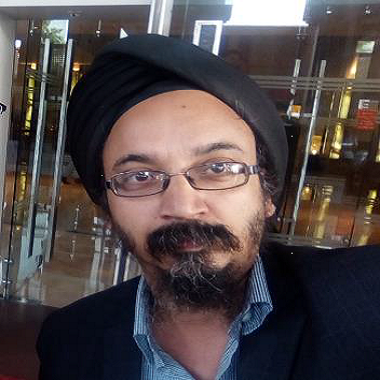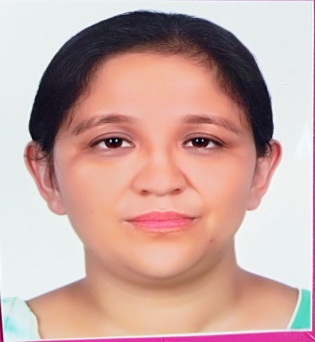Scientific Program
Keynote Session:
Title: Anomaly scan: Paradigm shift from the second to the first trimester
Biography:
Dr. Kuldeep Singh has been practicing ultrasound for over 18 years in South Delhi, INDIA. He is known for his ultrasound skills in Anomaly Scanning,Color Doppler Scanning and High risk pregnancy evaluation. He has more than 150 lectures in various national and international conferences. He has more than 100 articles and chapters to his credit and has authored 16 books on Ultrasound in Obstetrics, Gynecology and Infertility. His books have been translated into Spanish, Chinese and Portugese. The IMAGING SCIENCE AWARD was honored to him at the AICOG 2008. He has been appointed as associate director of Ian-Donald Inter University School of Medical ultrasound.
Abstract:
Ultrasound is an essential tool for any obstetric practise. When it started five decades ago little did we realise that this invention is a technological marvel. One could look into the presentation and the viability of the fetus. Acrania could be excluded in the third trimester and with ultrasound machines and probes getting better we could exclude that in the second trimester so called Level II scan. With high resolution probes and high frequency transvaginal probes one can now diagnose fetal abnormalities in the late first trimester. This avoids the mental trauma the mother and the family have to go through and lethal abnormalities can be terminated much earlier. Acrania, anencephaly, gross dysraphic disorganisation of the fetal spine, anterior thoracic and abdominal wall defects and gross limb abnormalities are few structural malformations that can be detected with ease as early as 11-12 weeks. Apart from structural abnormalities the index of suspicion for chromosomal abnormalities also is there with looking at the nuchal translucency, nasal bone and flow through the tricuspid valve and in the ductus venosus. Combined testing with a dual test increases the sensitivity manifold. What is most important is the knowhow of what to look and how to look in your 11-14 weeks scan.

Ayidah Sanad Alqarni
Ayidah Sanad Alqarni: Assistant Professor, Vice Dean of College of Nursing Female campus, ABHA, At KKU, Saudi ArabiaTitle: Designing simulation interventions to reduce stress among new graduate nurses in the intensive care units in Saudi Arabia: A mixed methods design
Biography:
Dr Ayidah Sanad Alqarni is Assistant Professor of King Khalid University, Saudi Arabia, Vice Dean of College of Nursing Female campus, ABHA, At KKU, Saudi Arabia. PhD in Medicine Nursing (2018) speciality (Critical care for adults) at University of Adelaide (UOA) in Australia, Master of Nursing Science 2011 at UOA. Bachelor of Nursing Conversion, Murdoch University, WA (2010), Diploma in teaching clinical instructor program of ministry of health Saudi Arabia (2003-2004). Diploma (nursing) ABHA College Female of Nursing Associated Degree), Saudi Arabia Awarded the intermediate university degree in Health Science in the field of general nursing (1998- 2001; 1992-1995). Employment: Registered nurse working in the critical care units (1994-2008) and Clinical educator (full-time position) at King Khalid University (Formerly known as Female ABHA college of Nursing) (Saudi Arabia).
Abstract:
Title: Prevention of Catheter-Associated Urinary Tract Infection among adult patients in an intensive care unit : A best practice implementation project
Biography:
Yi-Hung Yang is currently a Ph.D. candidate of School of Nursing, National Yang-Ming University, Taipei. Yi-Hung Yang is a part time lecturer in the Department of Nursing, Chang Gung University ,also has 25 years of clinical care including 13 years of intensive care experience in the Department of Nursing, Taipei Veterans General Hospital, Taipei, Taiwan. Yi-Hung Yang is also publishing research in related journals and seminars.
Abstract:
Aim: The objective of this evidence based implementation project was to promote evidence based best recommendations to implemented practice in the prevention catheter-associated urinary tract infection (CAUTI) in an intensive care units in Taipei.
Introduction: CAUTI caused adverse events of patient discomfort, prolonged hospital stay and increased cost and mortality. The infection rate of CAUTI was 2.19-10.58‰ in the ICU on 2018. The main causes of CAUTI are indwelling urethral catheter indwelling days and care. The effective prevention plan of CAUTI require an evidence-based approach.
Method: A clinical audit was undertaken using the JBI PACES tool. We evaluated nine audit criteria that represented best practice recommendations needed to apply for indwelling Foley care for CAUTI. Baseline and follow up audits and multiple strategies execution to overcome obstacles throughout an eight-week period in the ICU.
Results: The results showed improvement in compliance with seven guideline recommendations. The guideline recommendations that healthcare providers have received education regarding Foley catheter care from 23% to 100% compliance. Compliance with daily assessment and documentation of ongoing need to continue the Foley catheter compliance improved 56%. To decrease the incidence of catheter associated UTIs, focused on reducing the number of Foley catheter device days from 10.85 to 7.67days.
Conclusions: Overall the project was achieved and significant improvement in evidenced-based practice in prevent CAUTI. Criteria-based Foley catheter guidelines, a decision-making algorithm, and a daily checklist were implemented that led to a significant reduction in Foley catheter device days and a decrease in catheter-associated urinary tract infections.
Oral Session 1:
- Evidence Based Nursing, Public Health Nursing
Title: Assessment of education effects on patient involvement and bariatric treatment outcome: An observational study
Biography:
Abstract:
As a result of the growing number of people with obesity, the popularity of bariatric surgery has been systematically increasing. It has not yet been explored whether individual education of the patient can contribute to long-term success in weight reduction after bariatric treatment.
The study aimed to implement and compare the effects of different education methods, versus receiving one-time written information in the form of a guidebook, on patient involvement in abiding by lifestyle recommendations after LSG bariatric treatment.
The study included 160 patients with morbid obesity. The education session study participants were 100 patients after sleeve gastrectomy, with whom three education sessions were planned, and who were enrolled in the study. The control group consisted of 60 patients who underwent sleeve gastrectomy, and before discharge from the department, they received one-time written recommendations in the form of a guidebook.
We confirmed that the three education sessions we conducted with the study group after LSG had a significant impact on weight loss. The control group, which received only written information, achieved weight loss and abided by the written recommendations, however to a lesser extent than the study group. The differences were evident particularly in motivation to adhere to recommendations and check-ups, which was significantly lower (p<0.001) after a year of observation in the control group.
Sleeve gastrectomy is an effective surgical method in morbid obesity treatment, the educational sessions increased patient adherence to lifestyle recommendations. This study results should encourage the establishment of education as a permanent element of the LSG procedure.
Title: Factors influencing the development of Evidence based practice: Survey of nurses at a tertiary care center of Excellence
Biography:
Abstract:
Evidence based practice demands practitioners to identify the best evidence on all areas applicable to clinical decision-making. Ministry  of health in several  countries decided that the health care system should be based on evidence based practice. By overcoming the identified barriers evidence based practice can be more successfully implemented and patient’s prognosis rate can be improved. It was cross sectional study design  and data was collected between 20march to 20 April 2019 By using “Developing evidence based practice questionnaire†(DEBP). Data includes in DEBP, source of information which supports evidence based practice (EBP) self-reported skills for managing evidence based practice and  potential barrier which are involved in  EBP  among nursing staff of Pakistan kidney liver institute and research center. Among nurses’ profession, almost 90% of nurses used their experienced-based knowledge  collected from their own observations, and one of the major barriers to EBP was  short of time to practice EBP. However, factors like highest level of education are highly associated with evidence based practice to interpret  research finding for their own practice (p-value<0.001) and understandings of statistics in EBP (p-value<0.001) was also associated with level of education highest level of education is also associated to overcoming of barriers (p-value 0.02). EBP is highly influenced by changing educational strategies with respect to the type of clinical area where worked(p-value<0.001). Age of nurses, level of education, numbers of years of  receiving last health professional degree, are positively associated with the use of resource to implement the EBP on the clinical area and also with self-reporting for associated barriers of EBP. Research skills and finding of different sources for evidence based practice were in positive association with EBP and reciprocally associated with  the barriers associated with evidence based practice.
Nurses had strong belief in evidence based nursing they believed due to EBP  patients prognosis  will improve up to high extent. But unable to keep up to date with the current  literature and  understanding  with the result of statically analysis. more important due to high workload and  short time, unable to focus on EBP.
Title: Validation of the Chinese version of Joint Protection Self-Efficacy Scale in patients with rheumatoid arthritis
Biography:
Abstract:
Objective: To develop and validate the Chinese version of the Joint Protection Self-Efficacy Scale (CJP-SES) in patients with rheumatoid arthritis (RA) in China.
Method:(1) Translation of the original German/English version JP-SES and cultural adaptation into the Chinese language; (2)Validation of the CJP-SES with the Chinese versions of the Arthritis Self-Efficacy Scale-8 (ASES-8), the Laffrey Health Conception Scale (LHCS), 10-item Perceived Efficacy in Patient-Physician Interactions Scale (PEPPI-10), Disease Activity Score-28 (DAS-28) and Health Assessment Questionnaire (HAQ). Instrument measurement included reliability testing, item generation, construct validity, test-retest reliability and correlation with other measurements. Confirmatory factor analysis was applied to determine construct validity and internal consistency. 115 patients with RA were investigated.
Result: Finally 105 RA patients were included in the analysis. Confirmatory factor analysis demonstrated fit for a unidimensional model of the JP-SES. Additionally, the scale showed internal consistency (Cronbach’s α coefficient,0.922), Kappa coefficient (0.653) and test–retest reliability (ICC=0.94). Weak correlations with other scores for the other instruments, such as the Chinese version of ASES-8 (0.263) and PEPPI-10 (0.326).
Correlation with duration (0.274), moderate correlation with BMI (-0.438) and DAS-28 (-0.493), strong correlation with HAQ (-0.644) were found in this research.
Conclusion: This is the first study to adapt and validate the JP-SES into Chinese for use in patients with RA. Our research showing that the CJP-SES has a good construct validity, internal consistency, and test-retest reliability. This scale can help doctors and nurses to assess the self-efficacy of patients with RA.
Title: Satisfaction with life among senior citizens in Pokhara Metropolitan City
Biography:
Abstract:
Every life period brings success, happiness, and enjoyment in life, butunfortunately aging brings failures and distress. The descriptive cross-sectional study was conducted in Pokhara Metropolitan City, which was selected purposively. The overall objective of the study was to asses the life satisfaction among senior citizens.Cluster sampling method was used to obtain the 325 sample size from 17 cluster of Pokhara Metropolitan City. Data collected through life satisfaction index-A (LSITA) from the of period was 25th may to 21th July, 2019.
The findings were analyzed by using descriptive (frequency, percentage, mean standard deviation and inferential (chi-square and logistic regression) in statistical package for social science (SPSS) version 16. Findings revealed that 53.5% respondents were not satisfied with their life. Regarding its subscale majority 61.2% respondents were not satisfied with self concept. Life satisfaction was statistically significant with age, sex, education, present income source, family income (OR=4.391, CI=2.019,9.551), money for expenditure (OR=2.370,CI=1.362,4.123), being married, state of health and role in family decision making(OR=2.001,CI=1.055,3.793).
Based on the study findings, it is concluded that more than half of the respondents were not satisfied with their life. Financial state, state of health and role in family decision making are the main predictor of life satisfaction. Therefore, it is responsibility of the policy maker to develop the policy regarding improving socio-economic status of thesenior citizens to achieve good health, confidence, and increase self-acceptance.







